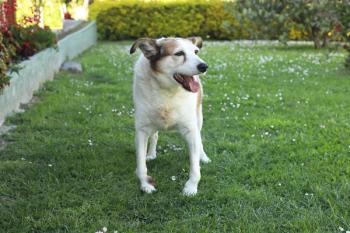
Anesthesia for sick patients (Proceedings)
Patients that have physiologic or pathologic abnormalities are more likely to develop complications during or after anesthesia and surgery.
Objectives of the presentation:
To identify some of the life-threatening changes that may develop during anesthesia of patients with serious abdominal disease.
To use cases to illustrate anesthetic management for prevention and treatment of these complications.
To discuss different anesthetic protocols with specific reference to their cardiovascular effects and impact on these high risk patients.
Summary of important points:
Prevalence of complications during anesthesia is increased in patients with major systemic disease.
Decreased anesthetic requirement, hypotension, and hypoventilation occur regularly in these patients.
Opioids and benzodiazepines are useful agents for these high-risk patients.
Thiopental and propofol cause greatest cardiovascular depression, and ketamine and etomidate the least.
Isoflurane and sevoflurane are frequently used for maintenance of anesthesia.
Fentanyl and lidocaine infusions in dogs are useful adjuncts to maintenance of anesthesia.
Management Overview
Patients that have physiologic or pathologic abnormalities are more likely to develop complications during or after anesthesia and surgery. A system for classification of risk associated with anesthesia has been found to closely correlate with occurrence of complications. The risk classification is 1 for completely healthy patients through 3 with compensated major systemic disease, 4 is major disease that could result in death in the near future, and 5 includes patients that are dying or severely ill that require emergency surgery in order to have a chance for survival. Surveys of both veterinary and human patients show that patients that have risk classification of 3 or above have significantly more problems with anesthesia. When the patient also has underlying cardiac disease, the risk for complications increases. Anesthesia risk evaluation in humans with cardiac disease undergoing non-cardiac surgery has revealed a significantly increased risk over healthy patients, with the risk of complications (morbidity) for patients with cardiac disease increasing from 2.9% for a minor procedure to 19% if the surgery is complex and to 49% in patients with an uncontrolled medical problem.
Dogs and cats with abdominal disease that present as high anesthetic risks include gastric dilatation-volvulus, splenectomy, intestinal volvulus, intestinal perforation, traumatic abdominal crush or perforation, protein losing enteropathy, pancreatitis, biliary calculi or mucocoele, exploratory for neoplasia, and urinary tract rupture. These patients should be managed before anesthesia to bring physiologic parameters to as close as normal as possible. These patients are prime candidates for hypotension and decreased peripheral perfusion during anesthesia if they are hypovolemic and hypoproteinemic. Blood volume and colloid osmotic pressure should be normalized before anesthesia and some animals that are anemic or have been bleeding may need a blood transfusion.
It is imperative to practice "Defensive Anesthesia" for these high-risk patients. Defensive anesthesia involves evaluating the problems before anesthesia, anticipating the complications, and making contingency plans.
Two intravenous catheters should be inserted in these animals before anesthesia in anticipation of the need for multiple drug administrations. Arterial blood pressure, heart rate, gum color, and capillary refill time should be measured perioperatively to monitor the patients' cardiovascular progress. Measurement of central venous pressure when a jugular catheter is in place (tip must be within the thorax) will provide additional guide to the patient's need for fluid. Dosage of emergency drugs should be calculated before anesthesia. This will shorten time to treatment of an abnormality and removes risk of inadvertent inaccurate drug administration. A prepared bag of dopamine or dobutamine should be present in the surgery room.
Animals that are obviously depressed, or are septicemic or endotoxemic, will have a reduced requirement for anesthetic agents and may need very little drug for endotracheal intubation and maintenance of anesthesia.
Animals with a large intra-abdominal mass are at risk for hypotension from aortocaval compression when they are turned into dorsal position. Manipulation of ischemic tissue, some neoplasms, or mesenteric traction may release catecholamines or other vasoactive products that cause abrupt hypotension. Reperfusion injury may develop in some organs that have been ischemic and blood supply restored during surgery.
Balanced electrolyte solutions, such as lactated Ringer's solution or Normosol-R, are used for basic fluid therapy during anesthesia. Patients that are hypoglycemic or have liver disease should receive 5% dextrose at 3ml/kg/h and the rate adjusted based on measurements of blood glucose. Cardiovascular support with any or all of the following may be necessary in these patients: dobutamine infusion at 5 micrograms/kg/min, dopamine at 7 micrograms/kg/min, ephedrine at 0.1 mg/kg, hetastarch, 10-20 ml/kg, and hypertonic saline, 2-4 ml/kg, IV.
Adequacy of ventilation and oxygenation should be monitored during anesthesia and in recovery. Controlled ventilation may be necessary. Regurgitation may occur in some of these animals and the pharynx must be cleaned before recovery from anesthesia. Passage of a stomach tube may be necessary to empty the stomach and lavage with water is indicated in some cases. The eyes must be protected from contact with gastric fluid; imperative in short-nosed brachycephalic breeds.
Specific Patients
Gastric Dilatation Volvulus
Abdominal distension resulting from gastric distension in experimental dogs decreases cardiac output as much as 90% from normal and the decrease in coronary blood flow causes myocardial ischemia. Measurement of increased serum concentrations of cardiac troponin I and cardiac troponin T in clinical patients with gastric dilatation volvulus (GDV) is supportive evidence of myocardial ischemia. The increased serum concentrations of these markers of myocardial cell injury were correlated with the severity of ECG abnormalities and outcome. Ventricular premature depolarizations may first manifest within 36 hours after the onset of the disease and are further evidence of myocardial damage. A recent retrospective study identified cardiac dysrhythmias in 51% of 166 dogs with GDV, and the majority of patients developed these during anesthesia.2
Mean intra-abdominal pressures (IAP) of 24.7 cm H2O, range 16 to 37 cm H2O, were measured in 8 dogs with GDV before gastric decompression using an indwelling transurethral catheter.3 Although arterial blood pressure may be unaffected by this value, cardiac output is significantly decreased at IAP of 13 cm H2O (10 mm Hg). Pressures as high as measured in GDV also significantly decrease blood flow to the intestinal tract, leading to intestinal ischemia and translocation of bacteria, decreased hepatic blood flow and decreased renal blood flows, leading to anuria. The mean IAP was 10.5 cm H2O after decompression and this is still higher than IAP of 4.5 cm H2O in normal dogs. This elevation could result from abdominal muscle splinting from pain as well as residual lavage fluid and intestinal gas.
Hypovolemia and dehydration are frequently present in dogs with GDV on admission to the hospital. Hypotension occurring at any time during hospitalization has been correlated with increased risk for death in dogs with GDV, as are the presence of sepsis, DIC, and peritonitis. Re-expansion of plasma volume before anesthesia is advisable to decrease the severity of cardiovascular depression on induction of anesthesia. Treatment with hypertonic 7.5% saline solution (HSS) or HSS-dextran at 4-5 ml/kg in addition to lactated Ringer's solution (LRS) will restore arterial blood pressure and peripheral perfusion more rapidly than treatment with LRS alone. 7.5% HSS has been reported to have several other beneficial effects in other species, including modulation of systemic inflammation and increasing urine output and intestinal motility post-operatively. HSS can be given rapidly over 10-15 min if considered necessary. Hetastarch, 10-20 ml/kg given IV over 30 min can also be used to expand blood volume and improve cardiac output. Not all dogs with GDV are in shock and preoperative treatment should be modified accordingly.
Increased IAP is partly alleviated by bulging of the diaphragm into the thorax. Ventilation is compromised and hypoxemia is more likely to develop during administration of anesthetic agents. Gastric decompression before induction of anesthesia and pre-oxygenation (administration of oxygen for a few minutes before anesthesia and throughout induction of anesthesia) serve to limit the impact of increased abdominal pressure and anesthetic-induced respiratory depression on PaCO2 and PaO2.
Peritonitis
Animals with peritonitis requiring surgical intervention include cases of external trauma, gastric or intestinal perforation, intestinal strangulation and intussusception, pancreatitis, pancreatic abscess, and pancreatic neoplasia, or prostatic abscess. These patients may be septicemic or endotoxemic in addition to having abnormalities of fluid balance. Anesthetic requirement may be severely decreased. Several anesthetic agent combinations are satisfactory for anesthesia of these patients as described in the previous section, provided that the agents are administered in small increments and titrated to effect. Patients that were recovered with an 'open abdomen' at the first surgery usually require higher dose rates when re-anesthetized 2 days later.
Circulating blood volume must be restored with balanced electrolyte and HSS, hetastarch, or plasma as needed. Circulatory support with dobutamine infusion is frequently necessary. Excessive PVCs and ventricular tachycardia are treated with an infusion of lidocaine.
During surgery, manipulation of ischemic tissue (intestinal volvulus, intussusception, pancreas, abscessed prostate), or sometimes traction on the mesentery, can be followed by an acute severe decrease in blood pressure.
Abdominal Mass
Exploratory laparotomy for evaluation of an abdominal mass is accompanied by a variety of problems.
Table 1. Problems encountered during anesthesia for exploratory laparotomy
Biliary System
Dogs with gall bladder mucocoeles are older, lethargic, anorexic, and may have concurrent pancreatitis or bile peritonitis. These dogs are sick and may have other problems such as cardiac disease. Dogs with distension of the gall bladder or bile duct obstruction (calculi) should not be given mu-receptor opioids (morphine, oxymorphone, hydromorphone) for premedication because they will cause constriction of the bile duct and possible rupture. Butorphanol and buprenorphine are less likely to cause biliary constriction. Decreased hepatic function can result in prolonged recovery from anesthesia. Propofol may therefore be a good choice for induction of anesthesia in these patients. Maintenance of anesthesia with isoflurane or sevoflurane is satisfactory. Cardiovascular support with fluids and vasoactive substances will be necessary in these patients. In a retrospective review of 60 dogs undergoing extra hepatic biliary surgery, 43 (72%) survived. The presence of septic bile peritonitis, elevated serum creatinine concentration, prolonged partial thromboplastin times, and lower mean arterial blood pressures were significantly associated with mortality.
Anesthetic Protocols
Many different anesthetic combinations are used for anesthesia of dogs and cats. Many of the protocols may be suitable for many of the patients in the sick abdomen category. These protocols may cause significant cardiovascular depression in the very ill patients and specific consideration of the effects of these anesthetic agents is warranted.
Anticholinergics are usually omitted pre-operatively in dogs with high heart rates or ventricular dysrhythmias (PVC). Opioid analgesia forms an essential part of a balanced anesthetic protocol. Opioids such as hydromorphone, oxymorphone, or morphine may induce vomiting and this is undesirable in animals with gastrointestinal distension, volvulus, rupture, or obstruction. These agents may be more safely administered after induction of anesthesia and endotracheal intubation. Fentanyl, butorphanol, and buprenorphine should not induce vomition. The benzodiazepines, diazepam and midazolam, have minimal effects on the cardiovascular system and provide useful combinations with the opioids and the injectable anesthetic agents. Hydromorphone or oxymorphone can be administered after endotracheal intubation if not given for premedication.
Medetomidine induces peripheral vasoconstriction that increases blood pressure followed by reflex bradycardia. Cardiac output is profoundly decreased. These effects are dose-dependent and if this drug is to be used, only small doses of 2 to 10 micrograms/kg should be given.
Dogs with abdominal disease, especially old dogs or dogs with gastrointestinal necrosis and septicemia may develop hypotension during anesthesia. Diazepam-ketamine, 1 ml/10 kg of a 50:50 mixture titrated IV to effect, may be a reasonable combination for sick dogs and cats. Ketamine does not sensitize the myocardium to catecholamines and increase the frequency of PVCs. However, centrally mediated release of catecholamines is responsible for sustained heart rates, blood pressures, and cardiac output in healthy animals. Ketamine's direct negative impact on cardiac contractility will be unmasked in patients with maximal sympathetic stimulation, or with autonomic blockade, or failing myocardium. Ketamine may cause a significant decrease in mean pressure if the patient has a damaged myocardium.
Propofol decreases cardiac contractility, causes vasodilation, and blunts the baroreceptors reflexes. Propofol can be used for induction of dogs that are not in shock, but it can result in a substantial decrease in MAP and may increase the frequency of ventricular dysrhythmias. Propofol must be given cautiously to hypovolemic, old patients, and patients that may have an ischemic myocardium, to avoid a severe decrease in blood pressure. Propofol has been documented to decrease cardiac contractility by 20% in healthy dogs but 40-65% in dogs with ischemic myocardium. IV injection of propofol should be administered slowly to minimize the cardiovascular depression.
Etomidate (Amidate) with diazepam or midazolam (up to 0.25 mg/kg) is less likely to decrease cardiovascular function in severely ill dogs. Etomidate and diazepam or midazolam are drawn up in separate syringes and administered alternately as one-fourth doses, flushing the catheter between drugs and waiting about 30 seconds between increments. The clinical signs of etomidate anesthesia are similar to those of thiopental and propofol. Dose rate of etomidate small dogs is 1 – 1.5 mg/kg and less in larger dogs, 0.5-1.0 mg/kg IV. Etomidate is available as 20 ml vials, 2 mg/ml. A sick German Shepard may only require 6 ml etomidate and 1.2 ml diazepam to facilitate endotracheal intubation. Continuous administration of etomidate is not recommended, as dose rates over 2.5 mg/kg are immunosuppressive. There is recent evidence that etomidate immunosuppression may last longer than the supposed <12 h, and there is one report that adrenal insufficiency in human septic patients in ICU given a single dose of etomidate was 76% compared with 51% when etomidate was not used.
An alternative protocol that usually maintains cardiovascular stability in sick dogs is induction of anesthesia with fentanyl and diazepam or midazolam, and maintenance of anesthesia with isoflurane or sevoflurane. Fentanyl, 6-10 micrograms/kg, and diazepam or midazolam, 0.25 mg/kg, are drawn up in separate syringes. One-quarter to one-third of each drug is administered IV, flushing the catheter between drugs, and the patient observed for 30-60 sec before an additional increment is administered. The drugs are titrated until there is sufficient jaw relaxation for tracheal intubation to be accomplished. This drug combination induces neuroleptanalgesia rather than general anesthesia and the dog may be responsive to loud noises and swallowing may be observed during intubation. Fentanyl has a short duration of action, 20 minutes after IV administration, and analgesia must be continued by IV infusion of fentanyl, 6 micrograms/kg/hr, or small supplements of hydromorphone or oxymorphone.
Anesthesia is maintained with isoflurane or sevoflurane, usually at a concentration dramatically less than is used in healthy animals. Continuous infusions of fentanyl, 6 micrograms/kg/h, or lidocaine are frequently added to the maintenance protocol for dogs. Lidocaine, 1 or 2 mg/kg IV, can be administered during induction of anesthesia in dogs, and before tracheal intubation, to block the effects of sympathetic stimulation induced by intubation. Lidocaine can be continued as an infusion at a rate of 0.025 - 0.05 mg/kg/min using a 1 mg/ml solution (500 mg lidocaine in 500 ml saline), and then the rate adjusted up or down according to the response. Lidocaine is administered for any of the following reasons: to decrease heart rate and to treat ventricular premature depolarizations, provide sedation to decrease the requirement for isoflurane or sevoflurane, and for its anti-inflammatory and anti-endotoxin effects. Lidocaine infusion in dogs decreases the vaporizer setting for isoflurane by about 19% to 30%.
Newsletter
From exam room tips to practice management insights, get trusted veterinary news delivered straight to your inbox—subscribe to dvm360.






